A 3D reconstruction of the face of this Burgundian woman from the V e century makes it possible to visualize this practice of artificial cranial deformation.
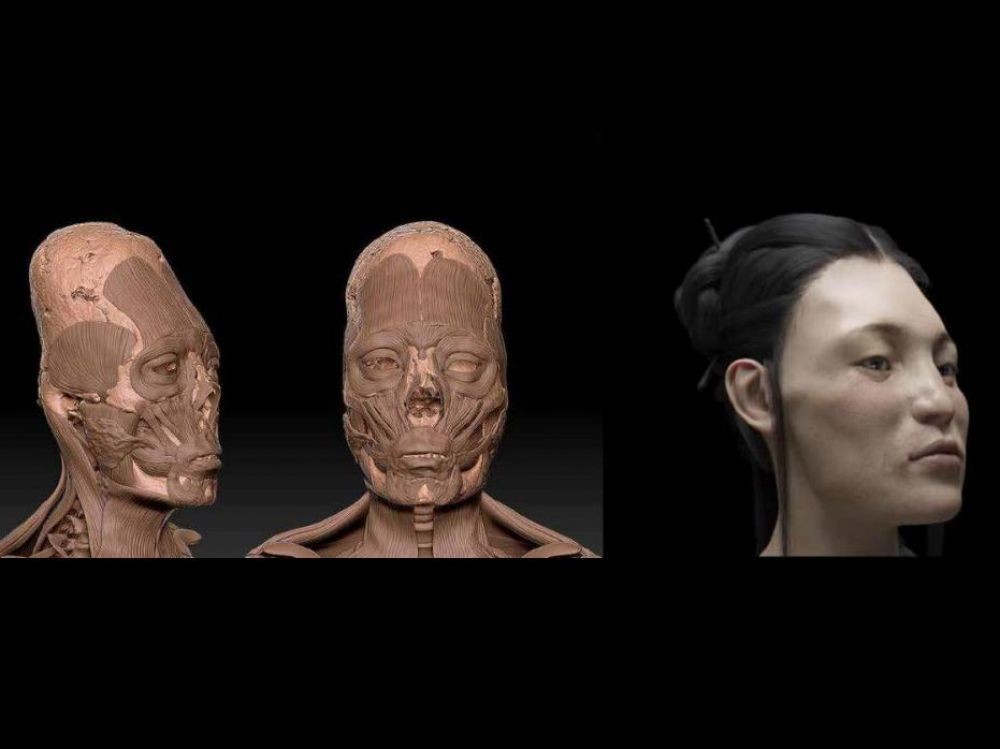
Facial reconstruction made from 3D modeling of the deformed skull of a Burgundian woman, discovered in the necropolis of Dully (Switzerland), in the V e century of our era.
His sugar loaf skull surprises even disturbs. The face of the Lady of Dully no longer meets contemporary beauty criteria with this remarkable voluntary deformation. At least as it appears thanks to this digital reconstruction commissioned from Philippe Froesch of the Visual Forensic laboratory, in Barcelona (Spain), to whom we already owe having restored features to the faces of Henri IV and Robespierre. Discovered in 1974 in the necropolis of Dully, a village established on the north shore of Lake Geneva, in the canton of Vaud (Switzerland), this young Burgundian woman in her forties is one of the attractions of the exhibition on the High Middle Ages, between the Alps and the Jura from 350 to the year 1000, proposed at the Valais History Museum until January 5, 2020, in Sion (Switzerland), prelude to its presentation at the Cantonal Archaeological Museum and history in Lausanne, from February to June 2020.
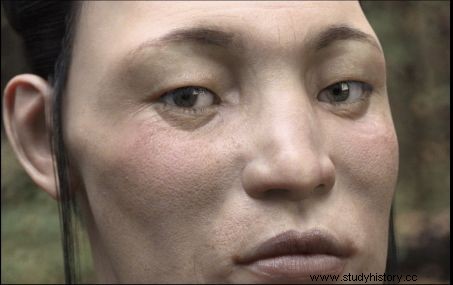
Reconstructed face of a Burgundian woman (V e century). ©Philippe Froesch - Visual Forensic
"The idea was to be able to show, concerning this little-known transition period located between the end of Antiquity and the beginning of the Middle Ages, the traits that people with artificially deformed skulls might have possessed, explains archaeologist Lucie Steiner, from Archéodunum, a Swiss preventive archeology operator. We have about thirty cases in this part of the Lake Geneva region, found during the XX th century."
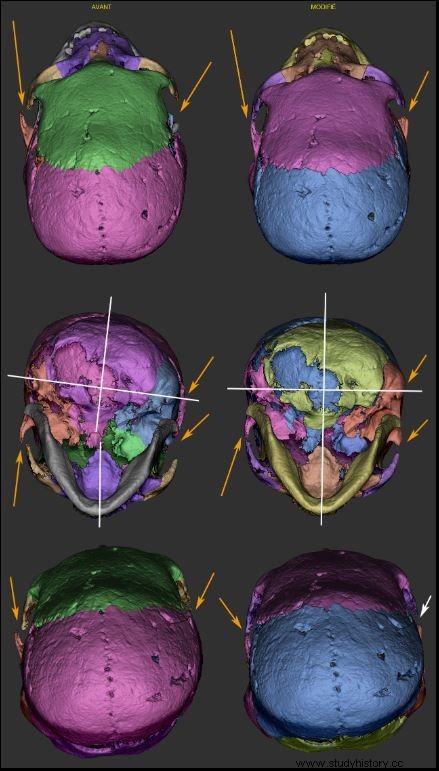
3D photogrammetric surveys of the deformed skull of the Lady of Dully. © Philippe Froesch - Visual Forensic
Arriving in the region of the lakes in 443, the Burgundian barbarians quickly assimilated into the local population. Installed on the territory of Sapaudia (which will give Savoy), they will be incorporated as allies to the Roman army led by General Aetius (395-454). They contribute to ensuring the defense of the limits of the Roman world, weakened in many places since Rome withdrew its troops from the borders of the Rhine in 402. "It was a way for the Romans to block access to the valley from the Rhône to the Alamanni" , adds Lucie Steiner.
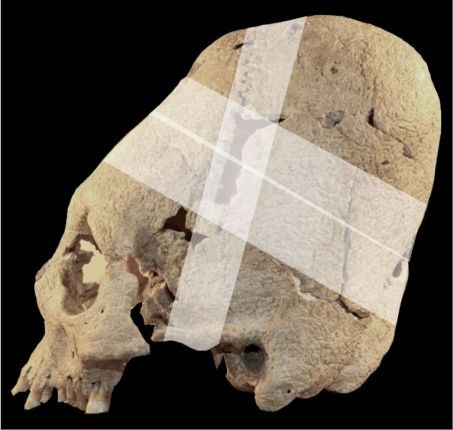
Proposal for placing the bandages that led to the cranial modification of the Lady of Dully (Switzerland). ©Geneviève Perreard-Lopreno
Among the Burgundians, one of the cultural practices dictated by aesthetic considerations was the intentional deformation of skulls. "To obtain this modeling, bandages or constraining elements in fabric or leather compressed the head of infants as long as it was malleable" , explains Geneviève Perreard-Lopreno, anthropologist at the laboratory of prehistoric archeology and anthropology at the University of Geneva (Switzerland). All to obtain, whether for men or women, a raised forehead, a guarantee of beauty.
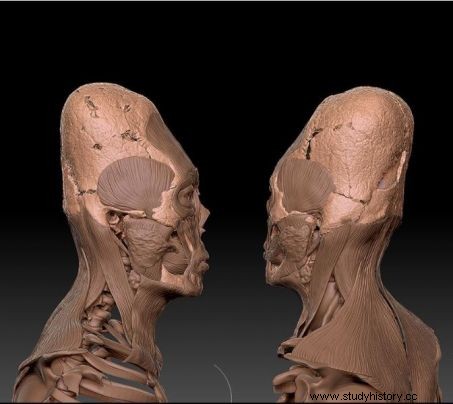
Insertion of ligaments and muscles during the 3D reconstruction of the modified skull of the Lady of Dully. © Philippe Froesch - Visual Forensic
This custom - which will gradually disappear as Burgundian integration among the Gallo-Romans - was not reserved for this people. It is also observed among the Alans and Sarmatians, Eurasian groups who found themselves mixed with the Burgundians during the great migrations. These traditions have been described on various archaeological sites in Switzerland, as well as in Northern Gaul, such as Obernai (Bas-Rhin), in Germania and in Eastern Europe.
A universal cultural practice
In Europe, testimonies mentioning these bodily modifications already appear among Greek authors of the V th century BC in their descriptions of the populations living around the Black Sea. These transformations were also practiced in France in the 19 th century and until the dawn of the XX th century. We then speak of "Toulouse deformation", even if it is found elsewhere. A small cap was thus worn by infants from birth and removed around the age of three months to obtain a deformation of the skull. Around 1871, the anatomist and anthropologist Paul Broca (1824-1880) studied more than a hundred of these cases distributed in the South-West, Poitou or in Normandy. Prefectural decrees finally prohibited the practice.
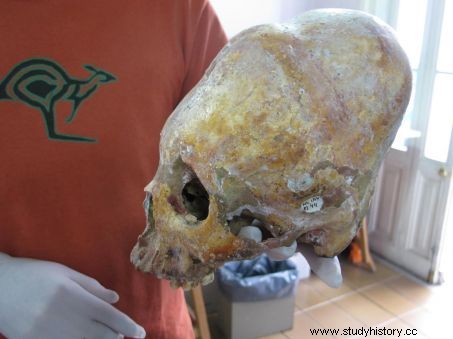
Deformed Mayan skull discovered in the depths of Puyil Cave, in Tacotalpa, Tabasco State, Mexico. ©Bernadette Arnaud
In the Andes, in South America, variants of these modifications dot the stories of Spanish chroniclers evoking the Incas. Today, researchers have established that their predecessors Paracas (800 BC-200 AD), Nazcas (200-600 AD) or the inhabitants of Tiwanaku (5th-11th century) carried out the same transformations. In Central America and present-day Mexico, "corncob" skulls were considered one of the most important canons of beauty by the Maya elite. On other continents, these behaviors are reported in Oceania, in Africa, for example among the Mangbetus (Democratic Republic of Congo), or in ancient Egypt during the Amarna period (14th century BC). Even Neanderthals would have used it!
